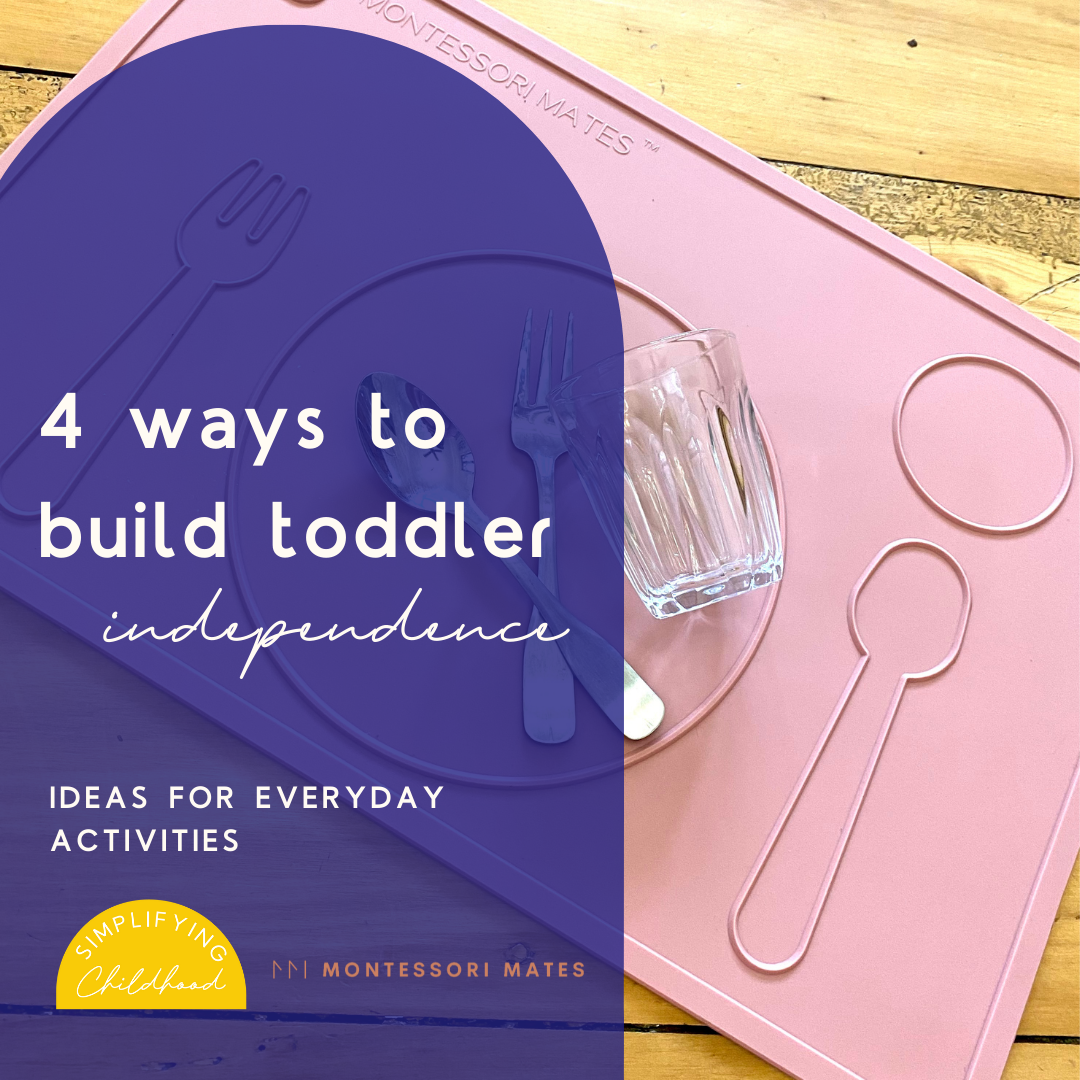5 ways to build your Independent Play Toolkit
Hands up if you want a cuppa coffee in peace? Five minutes on your own to recharge your batteries?
Some days we are exhausted, drained and can not deal with a stage 5 clinger calling out their favourite word “MMMUUUMMM” for the millionth time that minute. But the trick to building more independent play and finding a few minutes of peace isn’t about a magic bullet that will magically encourage or even ensure your child plays independently, rather it is about having a toolkit of ideas, tips and tricks that you can draw on that help set you up for success.
I hear you, mum life is tough and all we really want is a few minutes of peace to collect our thoughts before tackling the next thing on the to-do list. We want to see our child build their ability to be independent both in play and in life, and while we want to be needed … do we need to be quiet as needed?
In my new ebook, Building Independent Play, I give you the toolkit that you can draw on daily to build your child’s independent play. This is a mix of research-based theory, actionable ideas and simple to implement processes that will put you and your toddler on the path to success. Think your child is too young? Think again, independent play works best when started young so don’t be afraid to build their independence, it is not our jobs as Mums to entertain our children.
1. Your role in Independent Play
So the stage five clinger is dangling from your leg and you can’t go to the toilet in peace, we have all been there!
The role of the adult is always altering and for independent play, the goal is to build child-led play. This form of play is fully directed by children. It is voluntary, internally motivated, and based on the child's interests and desires. It is about children playing without direction or intervention. Everything from what, who and how they play is their own choice.
But in this, you could also model play, complete your own tasks or simply observe. Being busy while you are asking them to be busy, models the expectations of independent play, but this isn’t the largest part of the puzzle.
The biggest role you have, and the hardest part is to not interfere. To stop talking, stop directing and stop getting in your child’s way.
Think of your child as the director of their own play, they are in charge. Yes, using the spoon as a microphone but why can’t they? Yes, using the spoon as a drum stick is loud, but why not?
Each time we interfere to place our own expectations and ideas on our children, we stop them from being creative; we prevent them from expanding their understanding of their world and we stop independent play.
2. Start young
I remember a mum at work once saying to me:
“I wish someone had told me that I don’t need to play with my child all the time, now 5 years on, I never get a break”
So this is someone telling you:
It is not your job to entertain your child. It is not your job to be at their beck and call. And this starts from day 1.
Children get used to the routines and environment, if from their very first weeks, they have independent time on the floor you will find independent play as they get old easier. I remember in those first months the guilt I felt when I left Little Ninja on the floor and did the folding was strong, but she was fine. I was nearby and she was safe, happy and content.
The amount of time that you leave them or that they do independent play at a young age can vary based on their mood, the day, the activity and that is okay. Plus, some times babies just want to be held and there is nothing wrong with that too. You can not force independent play, instead this is more permission to put your child down, if you want to, if they want to.
If you are after ideas check out Casey from Little Lifelong Learners high contrast cards which are perfect for entertaining little ones as they develop their eyesight or Siân from Teach. Investigate. Play. who has a wonderful blog post on 15 ideas for tummy time.
3. Prepared environment
The environment that you would like independent play to occur needs to be set up for your child to succeed. This does not need to be a separate play space and can be part of the living area, it is more about your child’s ability to access their environment and meet their own needs in an independent manner.
Consider:
Can the child access everything they need?
Are they completely safe in the environment if you are walking in and out?
Is the environment engaging and inviting?
Is the space overwhelming with too many options that choice paralysis sets in?
Having a prepared environment isn’t about having all the right expensive wooden toys, or flashing light-up toys, it’s about creating a safe space where the child is capable of meeting their own needs during play and providing items for their play that are at their ability level. If you are struggling with this, use open-ended materials as these have the ability to suit a range of ages, abilities and play scenarios.
The more independent the child can be in their environment, the more of that hot coffee you get to drink!
"The first aim of the prepared environment is, as far as it is possible, to render the growing child independent of the adult." - Maria Montessori
4. Routines for Independent Play
To give space for separation, ensure you pencil in some clear one-on-one time.
Fill their cup so you then have space to fill yours … with a hot caffeinated beverage.
If children, feel disconnected from us they will actively seek this connection, whereas if it is predictable in the routine and they are feeling connected then they will explore more on their own.
This might sound counter-intuitive; however, this is golden.
For us, the more you can build this into the routine and rhythm of the day the more chance you have for success with independent play. For example, each morning after breakfast we play together, then I sit back with my cuppa and Ninja starts exploring on her own. It is part of the routine, we both know this will occur and it allows us just to fall into the routine. It also builds predictability into the day for all of us. Plus, the more predictable it is and the higher your chance for a cuppa.
These routines are not about watching the clock and forcing a set amount of time for time together or independence, rather it is about a rhythm, steps that we work through each day. Somedays the independent play is minutes, sometimes it is longer, by stopping looking at the clock, you remove the stress of how long they do or don’t play on their own.
5. Simple invitations to play
Picture this: You’re 5 and you run downstairs in the morning and see a new toy ... keeping quiet you play ... don’t want to wake your brother or anyone to alert them to your fun and everyone gets a sleep in!
Sounds dream like right! But this could be reality!!
Taking 5 minutes at night to set up an invitation to play could save your sanity in the morning while you make breakfast and have your coffee
The trick is simple (no one has time for more) and engaging (you want maximum play time). This is not my strong suit but there are some mums nailing this, my favourite to find simple ideas and inspiration from are:
Love from Kate has some amazing set ups! Check out her match the 3D objects, simple threading, and her simple car track!
Play.Activities.With.Mama check her out on both Youtube and Instagram
Does your child consistently call out “MUUUMMMY”? Do they always need you to play WITH them? Are you exhausted?
Then you will love the Building Independent Play ebook as it helps you create a toolkit filled with tips, tricks and the secrets to carving out a few moments in your day to yourself, to put your feet up, drink your hot cuppa all while you child is happy, playing and learning!
This means you will have time to collect yourself, rest and be the Mum you truly want to be, while your child is having fun and building their confidence through play.
Are you ready for your child to play independently? Are you ready for a hot cuppa?

















